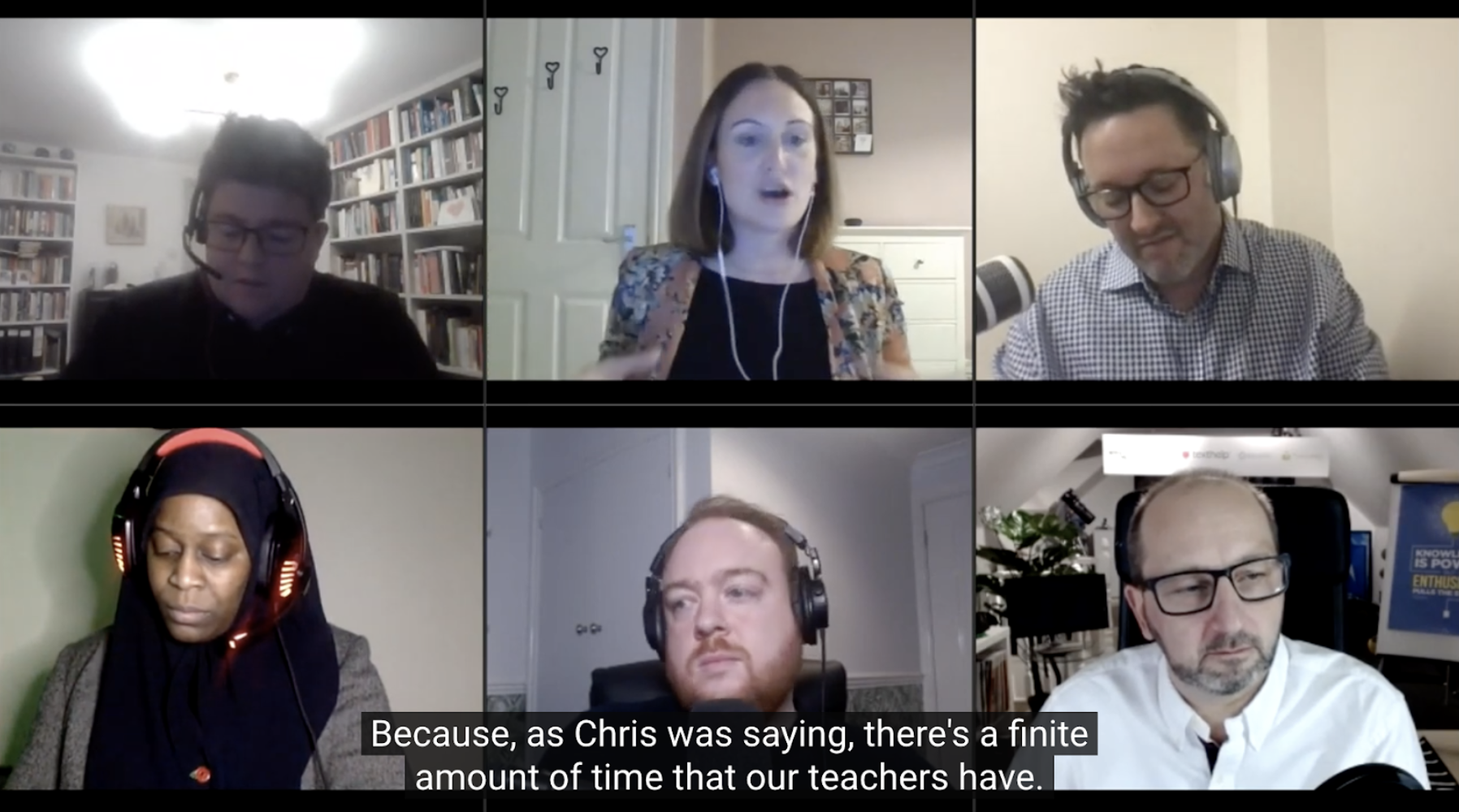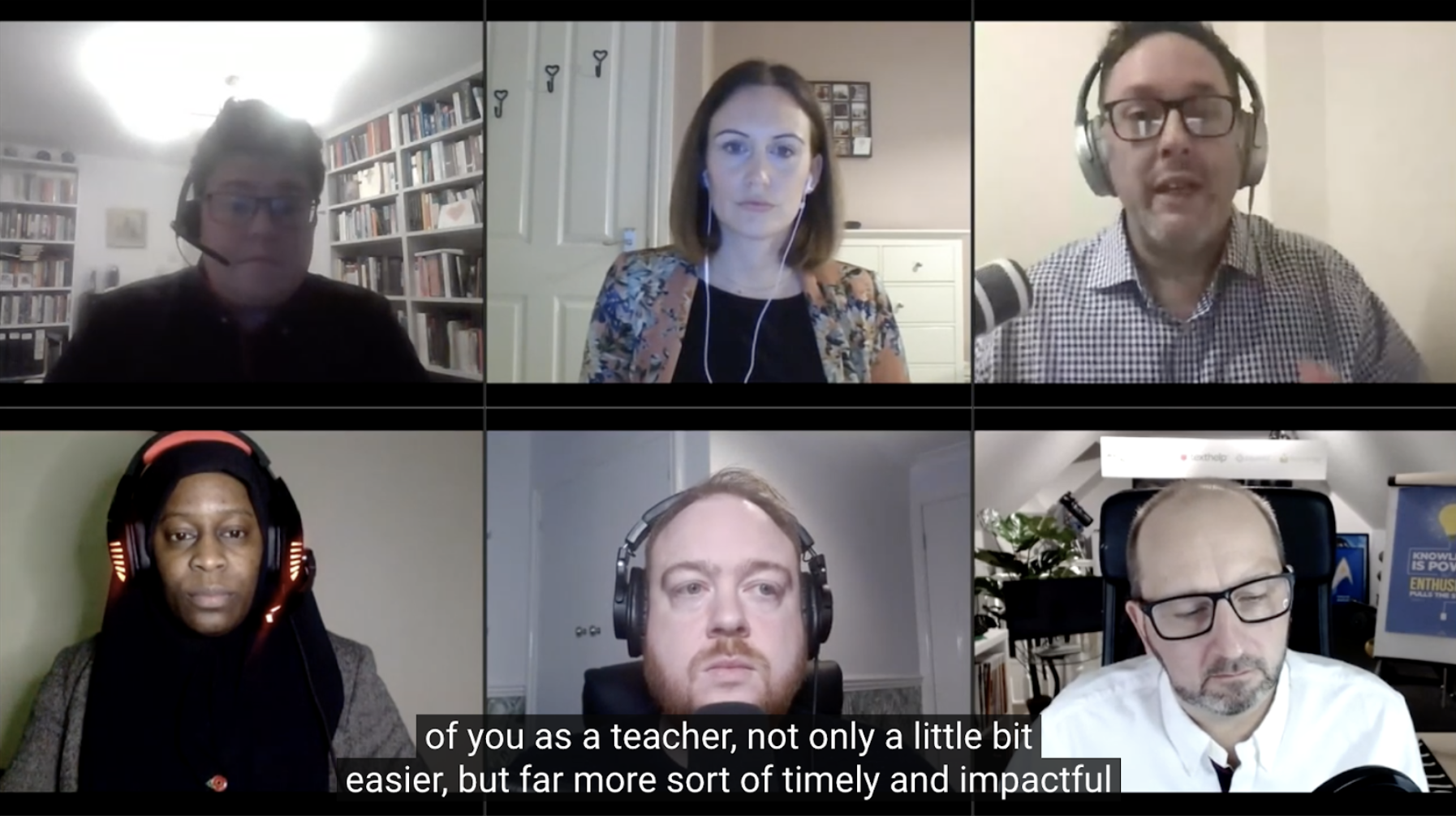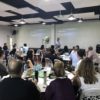
“The key is in not spending time, but in investing it.” – Stephen R. Covey
There are many acronyms and buzzwords in lots of different professions; I would argue none so much as in education. Whether it’s important you know the difference between your SIP and DIP or how to do DIRT, I’ll leave up to you but one word that has been prevalent throughout my career has been ‘workload’. Teaching is one of those jobs where there is always something else you could be doing. The job is never done. And if you’re someone like me who’s a bit of a perfectionist, it’s a recipe for all sorts of problems.
Workload is a topic which has always been close to my heart and over the years I developed a number of strategies to help me keep on top of the many wide and varied tasks of a teacher. From marking to feedback to dealing with emails and reports, I developed strategies for them all. Some of those strategies were linked to technology and how it can be used, some of them not.
With all of this in mind, as someone who has always shared about effective ways to reduce workload, I was really proud to be asked to join a webinar looking at exactly that, by Texthelp recently; the broadcast aired live on 30/11.
Others sharing as part of the broadcast were my co-host from UKEduStories, Bukky Yusuf, Kat Howard, Dan Fitzpatrick and Chris Wilson. The webinar debate was chaired by Patrick McGrath of Texthelp.

There was lots of helpful advice shared and lots of different perspectives shared; one thing, however, was consistent – workload, as reflected by the many different studies shared, is a huge issue in education.
As highlighted by Kat Howard, we should recognise that “there’s a finite amount of time that our teachers have”. Howard acknowledged a few things such as using that time wisely and saying “I don’t know why we’re using teachers in a really expensive way to hammer out emails or administrative work.”

We all know that technology can be used to make oneself more efficient and productive but if you don’t know how then you don’t know-how. In order to make these tweaks to your practice when you’re new to it, some people can face anxiety and stress and in order to get good, you need the opportunity to practice.
One key question we should always ask when seeking to embark upon a new initiative is to ask:
what will be removed to make sure there is time for the initiative?
…considering that staff will need to have the time, training and support in order to implement it.
Sometimes I hear this question being asked and it’s the right question to consider, however, a response I hear quite often is that the efficiencies people will gain from using technology will mean staff will be able to complete more. This may in part be true, eventually, but without time for staff to embed their newfound skills, remember which menu the filter option is, gain their muscle memory for the new keyboard shortcuts, remember the formula to calculate averages in the spreadsheet… without that time, it is a falsehood to think that just because an outcome could potentially reduce workload, just showing it to colleagues once without ongoing support, will result in the outcomes you desire.
The conversation on the webinar covered lots of areas where workload lies in a teacher’s job. We also touched upon the importance of leadership.
Leadership
One of the most important and impactful ways a leadership team can help reduce the workload is to be very careful in their planning of activities that involve work, the frequency in which they are requested and the processes involved in their completion.
Obviously, there are some activities which are a given; planning lessons, teaching classes – these sort of things don’t go away; but some things such as the frequency of marking and the depth at which it is completed can have a huge impact on teachers time. Careful reflection upon what is actually required, who the information is for and why you are doing it can make all the difference between making things possible or adding ever more work to a pile that’s already difficult to juggle. When discussing these activities and sharing solutions, as you’d imagine being a panel full of people interested in education and purposeful uses of technology, some great suggestions were made.

If I could pick just one of the ideas shared which can help to reduce workload, it was that of Dan Fitzpatrick where he shared about creative uses of Google Forms.
Google Forms was probably my key takeaway from my first ever TeachMeet I attended. Chris Baker from the Cabot Federation of Schools in Bristol talked about it passionately and I was hooked. Dan was as right now though as Chris was back then and Google Forms has come on so much since those early days. A powerful tool to support assessment, feedback, retrieval and more; if you’re a Google School you should definitely explore them. Equally, if you’re a Microsoft School, Microsoft Forms has come on massively in recent years and is also very useful for not just surveys and questionnaires, but for assessment and retrieval too; all working and integrating nicely in the Office 365 environment, just as Google Forms works well within Google Classroom.
And for me, it’s these integrations that have come online in recent years and in particular during the pandemic, that have really helped to make the difference. Making it increasingly easy to connect different tools together so that work flows more intuitively, connecting well and helping us all focus on our core business.

Whether it’s Texthelps’ WriQ working in Google Docs and in Microsoft Word or Adobe Spark’s integrations both in Google and Microsoft; more and more tools are integrated into the various ecosystems we as educators use, thus helping us be more productive, efficient and hopefully, saving us some time.
But… as was shared on the webinar and again in this article, you don’t know what you don’t know.
What we do know is that without the time for educators to learn about these opportunities and the time to embed them into their everyday practice; well – we wouldn’t do that to our learners and expect them to be taught something once and then be expected to be an expert in that thing every single day, would we?
So why is it different from adults?
It isn’t.
So if it’s important for you that your teachers learn how to undertake improvements in their use of tools such as technology to help reduce their workload, make them more efficient or improve life balance, time is what is needed. Time.
“The key is in not spending time, but in investing it.” – Stephen R. Covey
Mark Anderson 2020
This is a sponsored post for Texthelp as part of the webinar.













